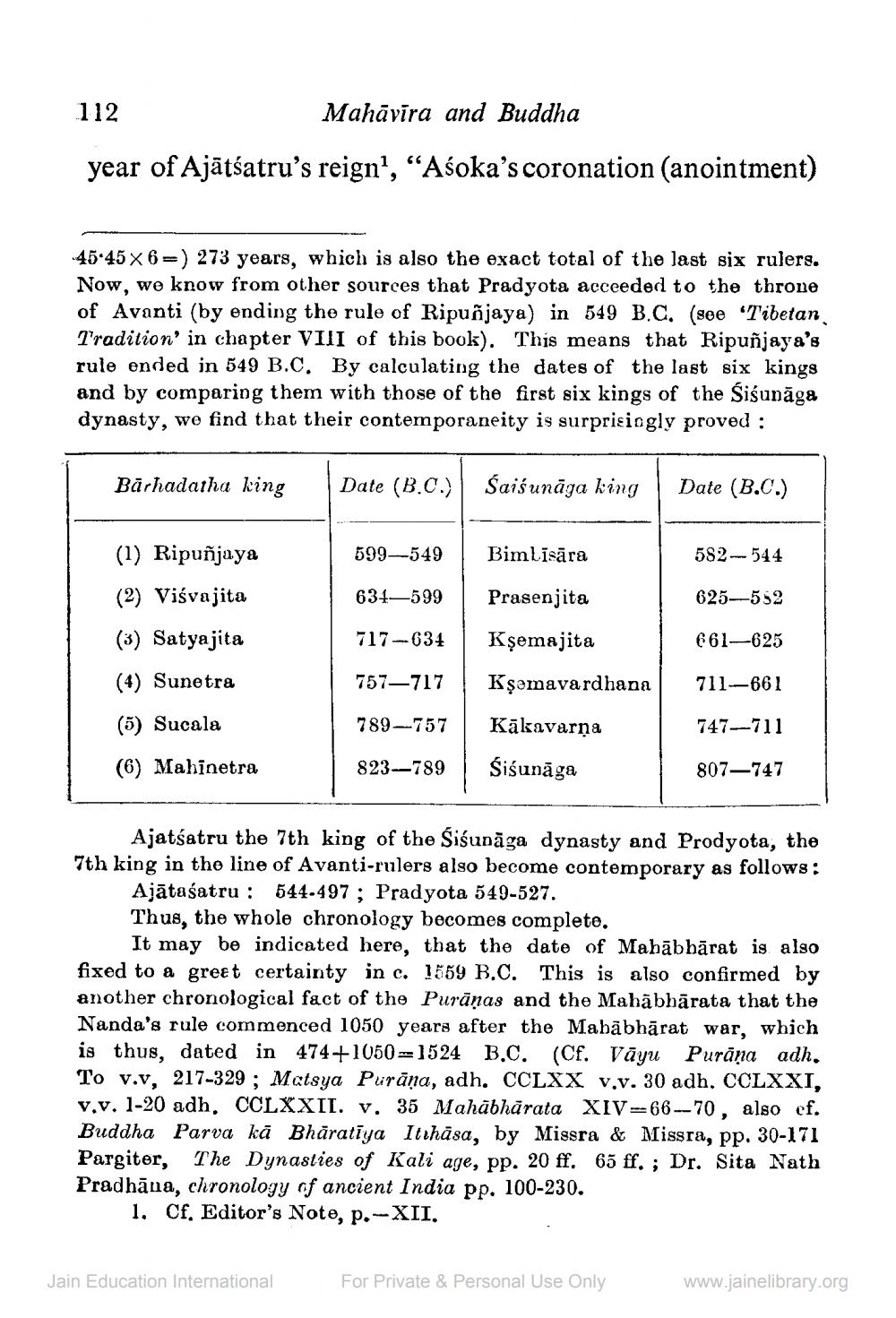________________
112
Mahāvīra and Buddha
year of Ajātšatru's reign", "Aśoka's coronation (anointment)
45.45 X 6 =) 273 years, which is also the exact total of the last six rulers. Now, we know from other sources that Pradyota acceeded to the throne of Avanti (by ending the rule of Ripuñjaya) in 549 B.C. (see "Tibetan Tradition' in chapter VIII of this book). This means that Ripuñjaya's rule ended in 549 B.C. By calculating the dates of the last six kings and by comparing them with those of the first six kings of the Siśunāga dynasty, we find that their contemporaneity is surprisingly proved :
Bārhadatha king
Date (B.C.)
Saišunāga king | Date (B.C.)
599-549
Bimlīsāra
582-544
(1) Ripuñjaya (2) Viśvajita (3) Satyajita
634—599
Prasenjita
625--552
717-634
Ksemajita
661-625
(4) Sunetra
757–717
Kșomavardhana
(5) Sucala
789_757
Kākavarna
711—661 747—711 807—747
(6) Mahinetra
823—789
śiśunāga
Ajatsatru the 7th king of the Siśunāga dynasty and Prodyota, the 7th king in the line of Avanti-rulers also become contemporary as follows:
Ajātasatru : 544.497 ; Pradyota 549-527. Thus, the whole chronology becomes complete.
It may be indicated here, that the date of Mahābbārat is also fixed to a great certainty in c. 1559 B.C. This is also confirmed by another chronological fact of the Purānas and the Mahābhārata that the Nanda's rule commenced 1050 years after the Mabābhārat war, which is thus, dated in 474+1050=1524 B.C. (Cf. Vāyu Purana adh. To v.v, 217-329 ; Matsya Purāņa, adh. CCLXX v.v. 30 adh. CCLXXI, v.v. 1-20 adh. CCLXXII. v. 35 Mahābhārata XIV-66--70, also ef. Buddha Parva kā Bhāratiya Itihāsa, by Missra & Missra, pp. 30-171 Pargiter, The Dynasties of Kali age, pp. 20 ff. 65 ff. ; Dr. Sita Nath Pradhāna, chronology of ancient India pp. 100-230.
1. Cf. Editor's Note, p.-XII.
Jain Education International
For Private & Personal Use Only
www.jainelibrary.org




